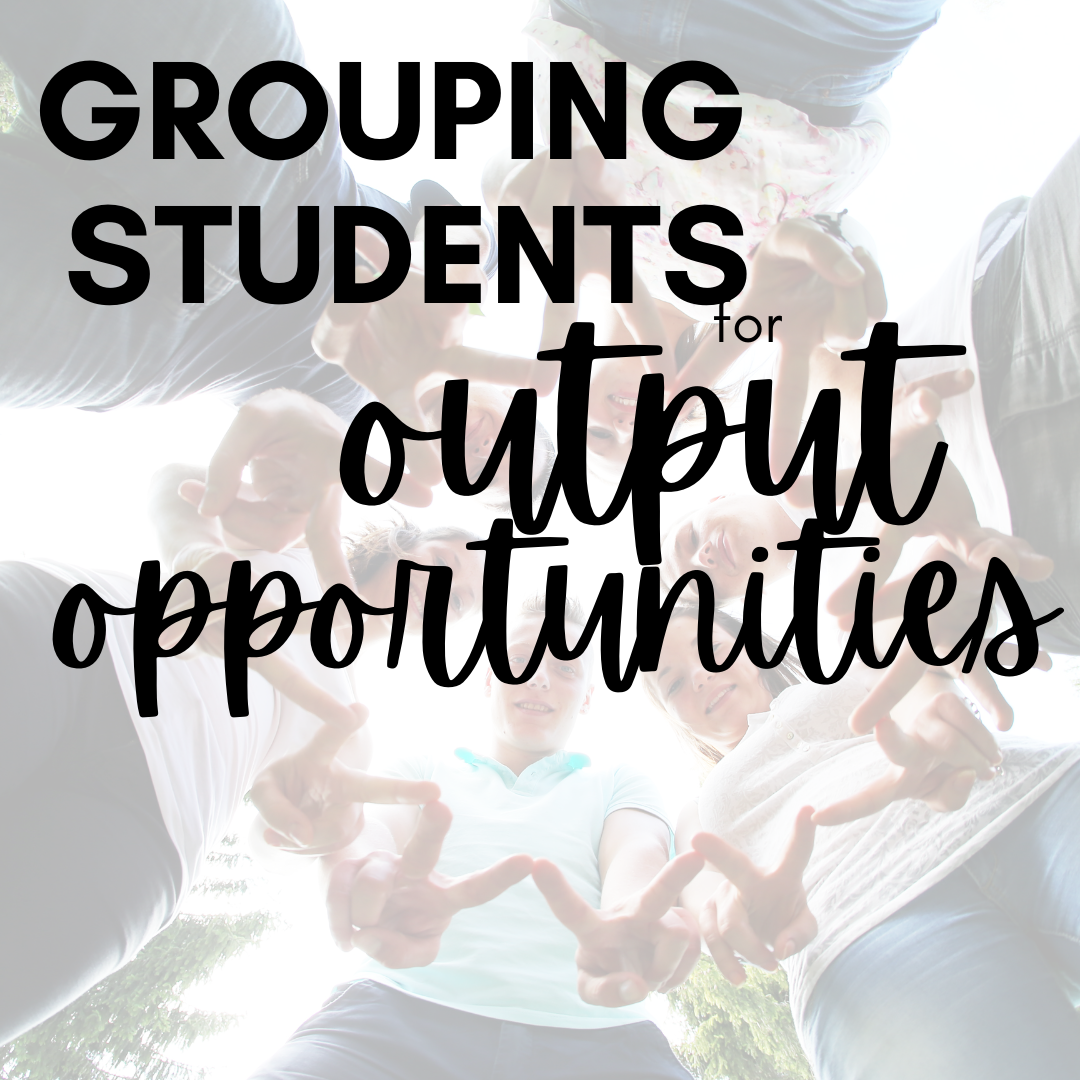
Grupitos: Grouping students for more interaction
Share
Small group work, weather for a quick Think-Pair-Share, a 10 minute activity, or for a project or presentation, is so incredibly important in a World Language classroom. Not only does it allow for students to foster skills in collaboration and to hear other opinions, but small groups create new opportunities for responsibility. More importantly than those extremely necessary skills, a small group is an affective filter lowering environment for students to use language. Gone are the days where the teacher asks a question and one student answers while the other 35 students zone out. I’m sure every class has those five students who want to answer every question...small group chat ALL THE TIME will eliminate that. Small groups provide the opportunity for multiple students to answer a question, opportunities to try their answers out on someone else before daring to speak to all, and to simply foster communication in a communication-based class. Try asking a question, then eavesdrop. Don’t ask for volunteers, but say “Sydney had a really good point...Sydney, what did you tell your group?” For those extra shy kids, let them know that you are going to ask.
How can you group your students to get them speaking or collaborating? Let me count the ways.
4 corners / Two sides - these are great for grouping students for quick interpersonal interaction and opinion based discussion with like minded people. For example, display four works of art in the room and have students move to their favorite piece. Students then share with the group why they chose that particular piece.
Magazine puzzles - Find some cool scenes from travel magazines of the target culture, target culture foods, stores, people, art -- whatever! Cut them apart into three or four large pieces. Distribute the pieces to your students and have them find their puzzle pieces to make small groups. This is a fun one to both discuss the picture, but also to complete the work that you want them to do in their teams. These work great with word to picture cards to review or recycle vocabulary, decks of cards, number & digit (match the word cincuenta to the number 50), etc.
Make a line - have students get in a line for anything: Most pairs of shoes at home, distance they live from school, age, height, birthday, whatever! Then break students into the size group that you’d like.
Random grouping with Team Shake - Team Shake is an app that takes a tiny bit of prep work at the beginning, but then is great to have the whole year. With the touch of a few buttons, your students are in random groups of perfect sizes. Your students will especially love being the teacher helper and getting to shake your phone to group everyone up.
Index cards - My friend Robin from Creative ASL Teaching has a great method for random and “random” grouping. What’s the difference? I’ll get to that. Robin has all of her students’ names on index cards, which she places on desks each day, collects during class, and shuffles to redistribute the following day. So, her students sit in a new seat each day. Amazing...they always have someone new to talk to, new voices, new speech patterns, and don’t have the burden of always being with someone that they don’t want to be with, since they switch it up so frequently. Also, this is a great opportunity to actually place students where you want them for certain days of your instruction without it looking like you were crafty while doing it. I find this especially helpful for those attached-at-the-hip groups.
Student choice - SO. IMPORTANT. With longer projects or more extensively evaluated tasks (group email, presentations) it can be extremely effective to allow your students the opportunity to choose their groups. Interaction is often enhanced among students who WANT to be together and, let's face it, they deserve it. We have all been in those staff meetings where we participate in Admin chosen groups...they have their place, for sure. However, if we are going to, say collaborate writing curriculum? We want to work with who we want to work with. Our students are the same way.
Heterogeneous / Homogeneous - These types of groups fulfill specific needs. Heterogeneous groups are great to foster collaboration, especially when the topic or project style is something at which lower achieving students thrive. Homogeneous groups can allow for students to work at a pace that suits their skills. These groups are great for projects that require research and presentations, etc.
The wrench in all of these plans? Distance Learning. Clearly breakout rooms are your best bet here, however, we highly recommend planning a somewhat asynchronous day, and having students come to your virtual class in smaller groups. This is great for playing games, having small debates, or even discussing something that was done prior to your meeting. From the most novice classes: Me gusta ______ porque… (each person shares) to full debates about the value of homework, small groups are the best way to get kids to speak.
What are some other creative ways that you group your students? Share with your other Mesamimadores below!
